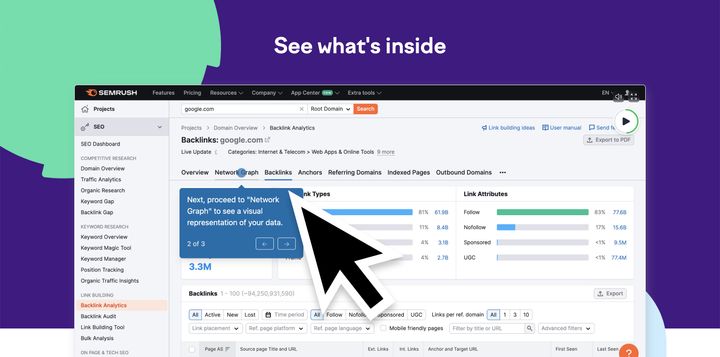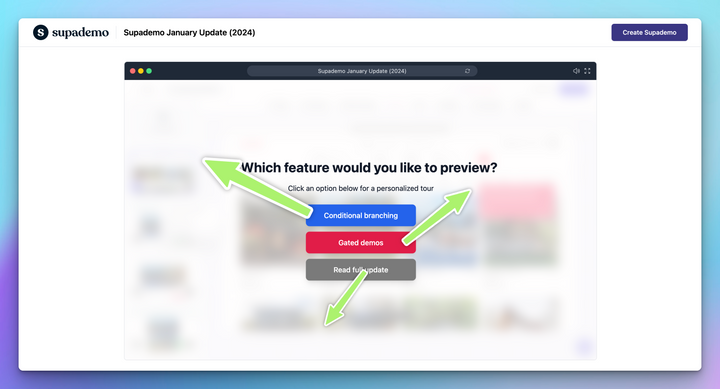Today’s buyers are more informed than ever. In fact, 62% of B2B buyers consume between three and seven pieces of content before ever speaking with a salesperson.
They already have a solid idea of who you are, what you offer, and how you compare to competitors. That means your job isn’t to repeat what’s on your website. It’s to uncover what really matters: their priorities, challenges, and fit.
This is where you take your prospects for a SPIN — and no, not the dizzy kind. We're talking about the SPIN sales methodology.
In this blog, we’ll break down what SPIN Selling is, how it works, and how you can apply it to modern B2B sales.
What is SPIN Selling?
SPIN Selling is a consultative sales methodology developed by Neil Rackham in the late 1980s. After analyzing more than 35,000 sales calls, Rackham found that top-performing reps followed a consistent pattern of questioning that helped them better understand buyers and guide them toward a decision.
SPIN is an acronym for the four types of questions that structure the conversation:
- Situation – to gather context about the buyer’s current state
- Problem – to uncover pain points and challenges
- Implication – to highlight the cost or impact of those problems
- Need-Payoff – to show the benefits of solving the problem and position your solution
Unlike a traditional pitch-heavy approach, SPIN Selling shifts the focus from talking about product features to actively listening, asking purposeful questions, and helping prospects connect the dots themselves. This creates trust, reduces resistance, and makes the buying decision feel more natural.
More than three decades later, SPIN Selling is still widely used in complex B2B SaaS sales because it provides a repeatable framework for discovery and builds stronger, more customer-centric relationships.
The four SPIN question types
The SPIN Selling framework is built around four types of questions that guide a sales conversation. Each stage builds on the previous one, helping you uncover context, highlight challenges, and lead prospects toward realizing the value of your solution.

Situation questions
You can’t help a prospect if you don’t know their starting point. Situation questions establish context by helping you understand the buyer’s current setup, tools, and processes. They set the stage for deeper discovery without diving into a pitch too early.
You might ask, “What tools are you currently using to manage customer onboarding?”
Problem questions
Once you have the background, problem questions help uncover pain points or inefficiencies in the buyer’s workflow.
The goal is to let the prospect articulate their challenges in their own words.
A good question could be, “What challenges do you face with your current onboarding process?”
Implication questions
Implication questions dig deeper by quantifying the cost of inaction. They help the buyer connect small problems to larger business consequences, creating urgency without pressure.
You could ask, “How much time do these issues take away from higher-value work?” or “What happens if this problem continues over the next quarter?”
Need-payoff questions
Finally, need-payoff questions reframe the discussion toward solutions. Instead of you telling the buyer why your product matters, you guide them to articulate the value themselves.
Questions like, “How would automating this workflow free up your team’s time?” or “What impact would solving this issue have on your customers?” naturally lead the prospect to connect the dots.
Together, these four question types transform a sales call from a product pitch into a consultative conversation that uncovers needs, builds trust, and sets the stage for a natural close.
What are the four stages of the SPIN Selling?
SPIN Selling isn’t just about asking the right types of questions. Rackham’s research showed that successful sales calls also follow four key stages. Together, they create a structured path from the initial conversation to a successful close.
Stage 1: Opening the conversation
The opening stage is about building rapport and setting the tone, not jumping into a product pitch. Ask high-level questions to understand the prospect’s role, goals, and priorities. For example, you might explore what their team is focused on this quarter or how they measure success. This helps establish trust and positions you as a partner, not a seller.
Stage 2: Investigating needs and challenges
This is the heart of SPIN Selling. Here, you use situation and problem questions to uncover how the prospect works today and where they’re struggling.
“In our research, we consistently found that the people who were most effective during the Investigating stage were the ones most likely to be top sales performers.” ~ Neil Rackham, Author of SPIN Selling
The goal is to get them to talk openly about issues such as onboarding delays or inefficient processes, so you can later connect those problems to business outcomes. By listening more than talking, you build credibility and collect valuable context.
Stage 3: Demonstrating capability
Once you understand the problems and their implications, it’s time to show how your solution can help. Instead of listing features, tie your product’s benefits directly to the prospect’s challenges.
For example, highlight how automation reduces manual work or how analytics can speed up decision-making.
This is where interactive demos become powerful. Rather than walking through a static product tour, demo tools like Supademo let you build personalized demos at scale. You can capture your product’s HTML and CSS, customize details like logos and prospect names without writing any code.
Here's an example of an interactive demo created using Supademo:
Stage 4: Securing commitment
The final stage is about guiding the prospect toward a decision, whether that’s a pilot, a stakeholder follow-up, or confirming next steps. By now, they already see the value, so the goal is to make commitment feel like a natural next move.
This is where a recap email with an interactive demo can help. With Supademo, you can share a personalized walkthrough that lets stakeholders experience the solution firsthand. Built-in analytics show who engaged, which workflows they explored, and where interest is strongest, helping you focus follow-ups on high-intent buyers.

For multi-stakeholder deals, you can also share a showcase collection featuring multiple demos for different features or use cases, so each decision-maker can explore what’s most relevant to them.
Here's an example of a Strava multi-demo showcase:
What are the benefits of SPIN Selling?
Here are some of the key benefits of using SPIN in your sales process:
- Builds trust and rapport: By focusing on the prospect’s situation and problems instead of pushing features, reps show genuine interest. This creates stronger relationships and credibility early in the sales process.
- Creates urgency without pressure: Implication questions highlight the cost of inaction, helping prospects see the risks of sticking with the status quo. This encourages action without resorting to aggressive tactics.
- Reduces sales objections: Because reps uncover problems and needs upfront, the solution feels more natural. Prospects are less likely to raise objections since they’ve already acknowledged the challenges themselves.
- Provides a repeatable framework: The four question types give reps a structured way to run discovery. This consistency improves team performance and helps new reps ramp up faster.
- Improves coaching and training: Managers can evaluate how effectively reps use SPIN questions during calls, making it easier to give targeted feedback and improve sales conversations.
What are the limitations of SPIN Selling?
As effective as SPIN can be, it’s not the perfect fit for every sales situation. Here are a few common limitations to consider:
- Lengthens sales cycles: The structured questioning process can take more time than some buyers are willing to invest, especially in fast-moving deals.
- Requires training and practice: Without proper coaching, reps may sound scripted or robotic, making conversations feel less natural.
- Less suited for transactional sales: For low-ticket or one-call-close products, in-depth discovery isn’t always practical or necessary.
- Can frustrate prospects: Overusing questions without providing insights can make buyers feel interrogated instead of guided.
20 SPIN Selling questions to use in SaaS sales
To make SPIN Selling practical, it helps to have a bank of questions you can adapt to different contexts. Below are 20 examples of SPIN Selling questions tailored to SaaS sales conversations.
Situation questions
Here are 5 situation questions that set the stage by uncovering the buyer’s current setup and workflows.
1. How are you currently managing [specific workflow, e.g., customer onboarding]?
2. What tools or platforms does your team rely on today?
3. How does your team measure success in this area?
4. Who is responsible for [process] in your organization?
5. How often do you review or update this process?
Problem questions
Here are 5 problem questions that surface inefficiencies and pain points.
6. What challenges do you face with your current tools or processes?
7. Are there any bottlenecks that slow down your team’s work?
8. What feedback have you received from users or customers about this process?
9. Where do you see the most errors or manual rework?
10. What prevents your team from scaling this process effectively?
Implication questions
Here are 5 implication questions that highlight the consequences of leaving problems unresolved.
11. How does this challenge impact your team’s productivity or morale?
12. What effect does it have on customer experience or retention?
13. How much time or money is lost due to these inefficiencies?
14. Have these issues ever delayed a product launch or customer rollout?
15. What risks could arise if this problem continues over the next quarter?
Need-payoff questions
Here are 5 questions that guide the prospect in articulating the value of solving the problem.
16. How would automating this process change your team’s workload?
17. What impact would solving this issue have on customer satisfaction?
18. How valuable would it be to reduce onboarding time by [X]%?
19. If this problem were fixed, what else could your team focus on?
20. How would adopting a more scalable solution support your growth goals?
8 Best practices to apply the SPIN Selling methodology in action
SPIN Selling works best when it’s more than a script. To make it effective in real conversations, reps need to combine the framework with preparation, listening skills, and the right tools. Here are eight best practices to put it into action:
1. Lead with curiosity, not assumptions
SPIN questions only work if you’re genuinely interested in the answers. Go into discovery with the mindset of a consultant who wants to understand the buyer’s world, not just qualify them for a pitch.
2. Balance open-ended and specific prompts
Open-ended questions spark conversation, but layering in specific prompts helps prospects get concrete. For instance, instead of asking, “How’s onboarding going?” ask, “How long does it typically take a new customer to activate?”
3. Build on what the prospect shares
Rather than moving mechanically through your question list, use follow-ups to dig deeper. If a buyer says onboarding takes “a while,” don’t move on—ask what “a while” means in measurable terms.
4. Connect problems to business impact
Don’t let pain points sit in isolation. Guide prospects to link small frustrations (like manual reporting) to larger outcomes (slower decisions, revenue leaks, customer churn). This is where implication questions carry the most weight.
5. Avoid pitching too soon
The urge to jump in with solutions can be strong. But SPIN sales methodology works only when the buyer reaches the decision themselves. So, hold back until you’ve worked through situation, problem, and implication questions.
6. Let the prospect do most of the talking
As a rule of thumb, aim for the prospect to speak at least 60–70% of the time. The more they articulate their challenges, the more ownership they feel over solving them.
7. Do your homework before the call
SPIN is not a replacement for research. Go in knowing the company’s size, industry context, and likely challenges. This prevents you from asking questions that the buyer expects you to already know.
8. Use interactive demos to reinforce the payoff
The need-payoff stage works best when buyers can see the benefit, not just hear about it. Interactive demos bridge that gap by showing the real outcomes your questions uncovered.
With Supademo, you can turn any workflow into a tailored walkthrough or sandbox demo that mirrors the buyer’s environment. Add realistic dummy data, spotlight key features, and guide prospects through the exact processes that solve their pain points. When buyers experience the payoff firsthand, the value becomes undeniable.
Here's an example of Ahrefs sandbox demo created using Supademo:
Applying SPIN Selling to modern sales
Today’s buyers are more informed than ever. They’ve done their research, compared vendors, and expect reps to act like trusted advisors.
SPIN Selling fits perfectly because it slows down the pitch and focuses on what really matters: the buyer’s context, challenges, and goals. This results in sales conversations that feel collaborative, not transactional.
To put this into practice, give buyers more than words. When you pair SPIN with interactive demos, you show exactly how your solution addresses their needs in context.
Supademo makes it simple to create personalized walkthroughs that mirror real workflows. This combination helps prospects see the value clearly and builds the trust needed to move forward with confidence.
Try Supademo to create high-converting demos for free!
FAQs
Is SPIN Selling still relevant today?
Yes. SPIN Selling remains highly relevant because it focuses on understanding buyer needs rather than pushing products. In today’s buyer-led world, it helps reps build trust, uncover deeper challenges, and guide more meaningful sales conversations.
What industries benefit most from SPIN Selling?
SPIN Selling works best in complex B2B industries such as SaaS, consulting, manufacturing, and enterprise technology. Anywhere decisions involve multiple stakeholders, long cycles, or nuanced needs, SPIN helps uncover context and create clarity that accelerates consensus.
How is SPIN Selling different from other sales methodologies?
Unlike frameworks that prioritize closing or qualification, SPIN Selling centers on discovery and understanding. It uses structured questions to help buyers recognize their own needs, making it more consultative and collaborative than aggressive, pitch-driven approaches.
How do you train reps to use SPIN Selling effectively?
Start with live call role-plays and recorded sessions focused on questioning, listening, and pacing. Encourage reps to build natural curiosity and avoid rushing to solutions. Reinforce training with AI coaching tools and real call reviews for continuous improvement.




